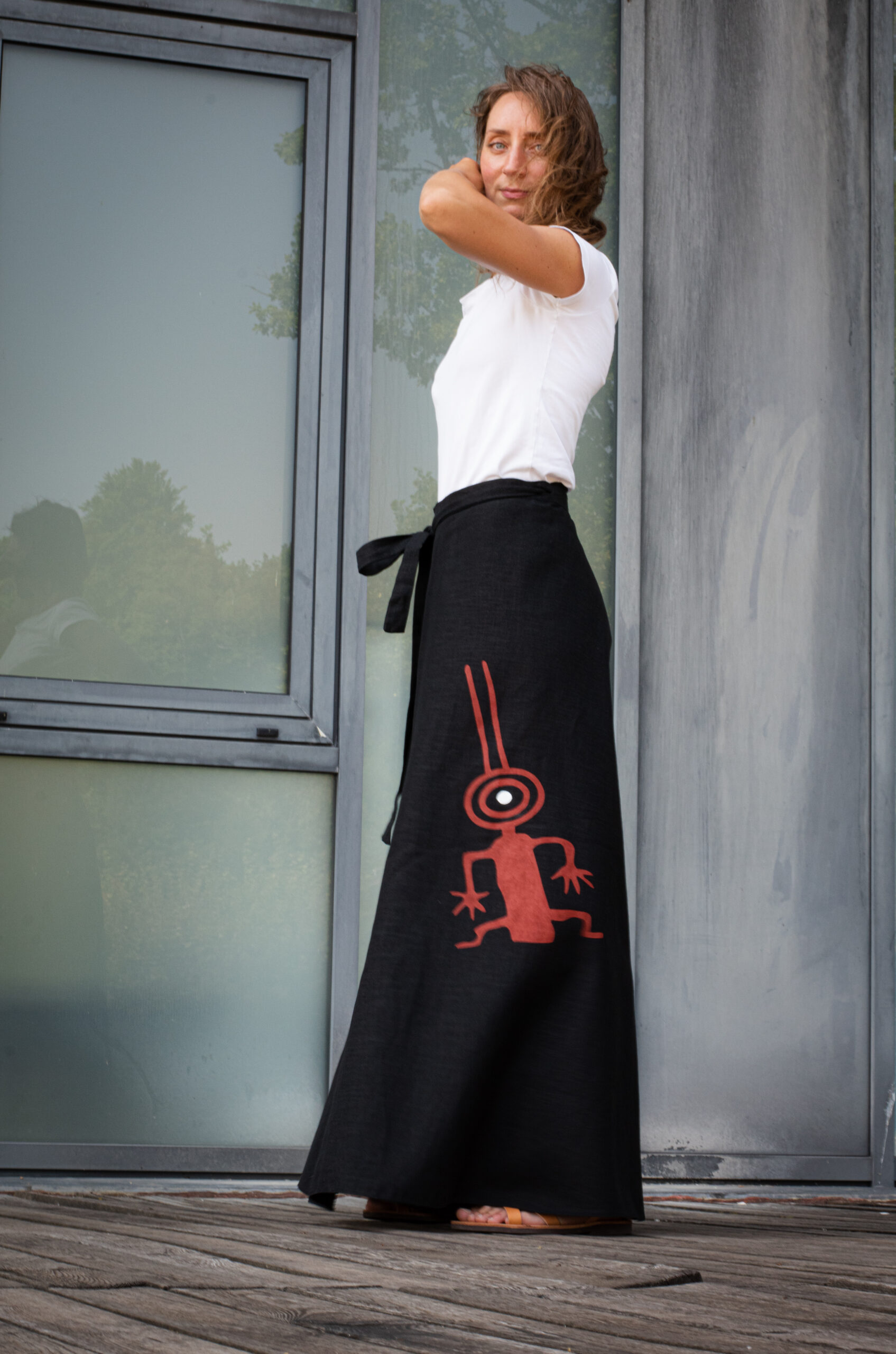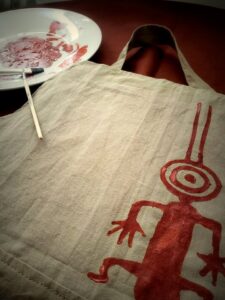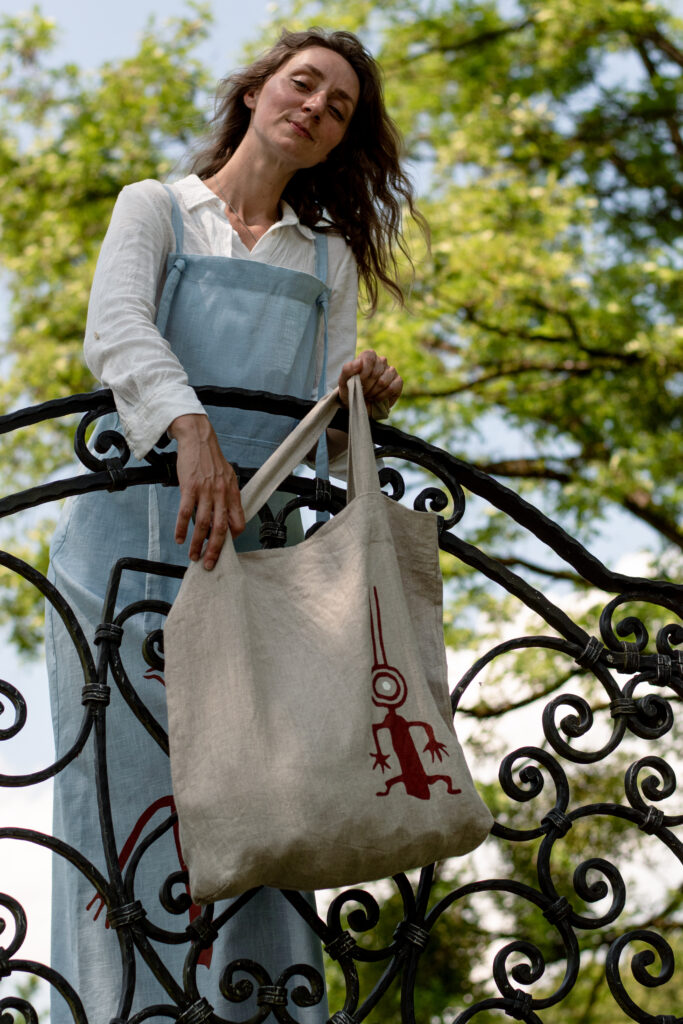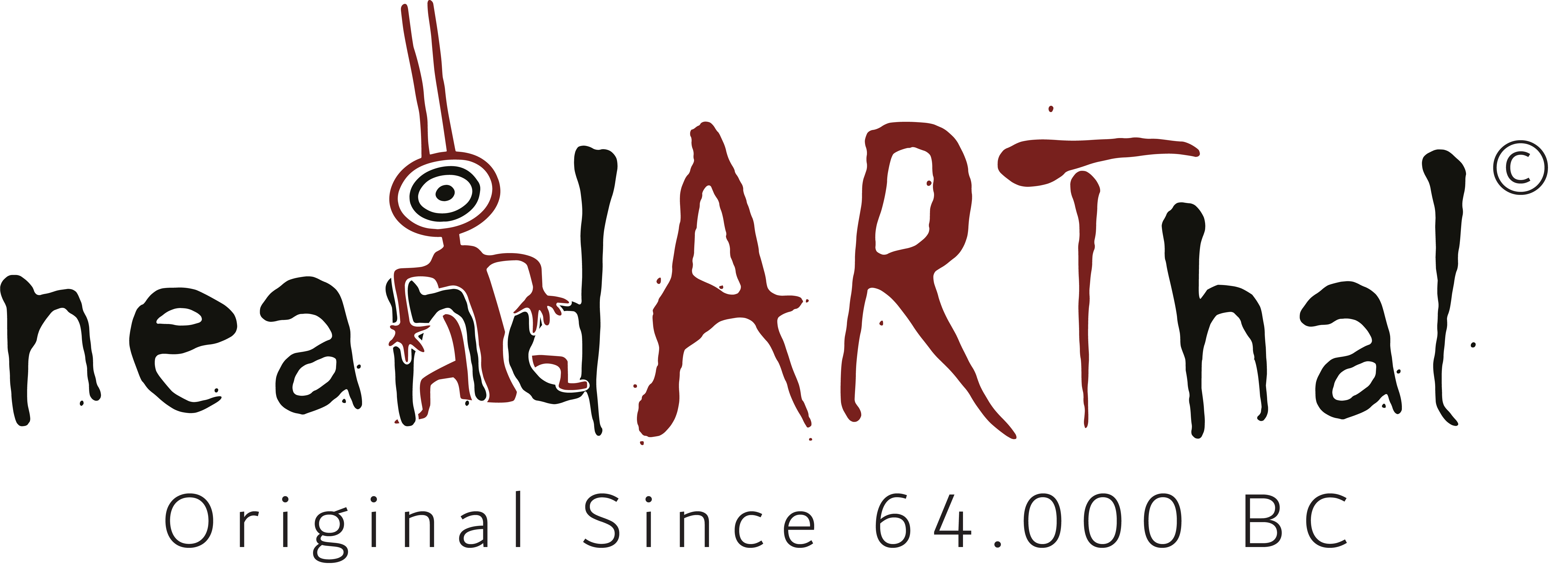Hi. Welcome back.
If you could grant us another moment, we’d like to invite you to imagine what neandARThal is all about.
To do that, let’s try using simple binary Yes and No sentences. How does that sound?
No: No, this is not just another piece of clothing. It’s an artwork that moves—with you and on you. One might say it’s a well-traveled work of art.
Yes: Yes, it is a dress. Or a skirt. Or a bag. Confusing? Probably. But why not?
However: It is a dress, or a skirt, or simply another “different kind” of canvas. Everything is hand-made and hand-painted. The designs are simple, yet fashionable and comfortable to wear.
Yes: So yes, it is an item because we want the art to “go out into the world,” so to speak. To spread, to communicate. After all, that’s what art itself wants to do—to touch as many souls as possible. And the parents of art—wisdom and love—want the same.


Imagine these clothes as the canvas of the art our ancestors created—because that’s exactly what they are. These images can be found literally everywhere in the world—from Africa to Scandinavia, from Australia to Alaska, and everywhere in between.
What this means is that they are a huge part of us—all of us. You and me, us and them. It’s one of those things that connects us on the deepest and farthest level. Art has been the connection since the dawn of our species.
But why paint them on wearable items? Findings suggest that our ancestors decorated their garments with symbols. So, did the same artists who painted the walls also adorn their clothes with these images? We don’t know for sure. For us, it’s a possibility. We can only speculate because we are artisans, not scientists.
What we do know is that at least 38,000 years ago, people were using linen. That’s why we choose to do the same today—using sustainable OEKO-TEX® linen.
That being said, all these “collective memories” are unique, one-of-a-kind variations, so each piece looks different. There is no “line.” Since this is artwork, you’ll notice that sometimes we recreate the entire image, while other times we focus on just a detail. It’s an interpretation of what is seen and felt.
When it comes to colors, we know that many different hues were used in these ancient paintings. It’s also known that early humans traveled as far as 40 kilometers to obtain iron earth pigments for their paints in the Lascaux area.
This is why we use a broad palette. Sometimes, we choose colors to pay homage to some of the great modern artists, and every now and then, we get “inspired.”
Since this is not merely apparel, we’ll provide you with quality information about the origins of the artwork. You’ll be able to dive into the story of humanity’s journey through time and truly feel the connection. We promise to remain as authentic as possible.
All of this is for your enjoyment and intrigue.
Just imagine—after learning all of this, when someone asks:
“What is that? What does your clothing mean?”
You’ll have the opportunity to decide just how deep the conversation goes.

If we had to sum it up in one sentence, we could say:
neandARThal is a “special kind of art”—ancient art painted on hand-made linen clothing for anyone seeking unique, high-quality, and sustainably produced wearables. It allows you to express your values and ideas about the world while supporting knowledge, research, history, independent artisans, and small, honest businesses.
Well… that’s it! And remember—spread LOVE wherever you are!
P.S. If you still have questions, there’s an FAQ just for you! (The rhyme was intentional—please ignore that part.)

